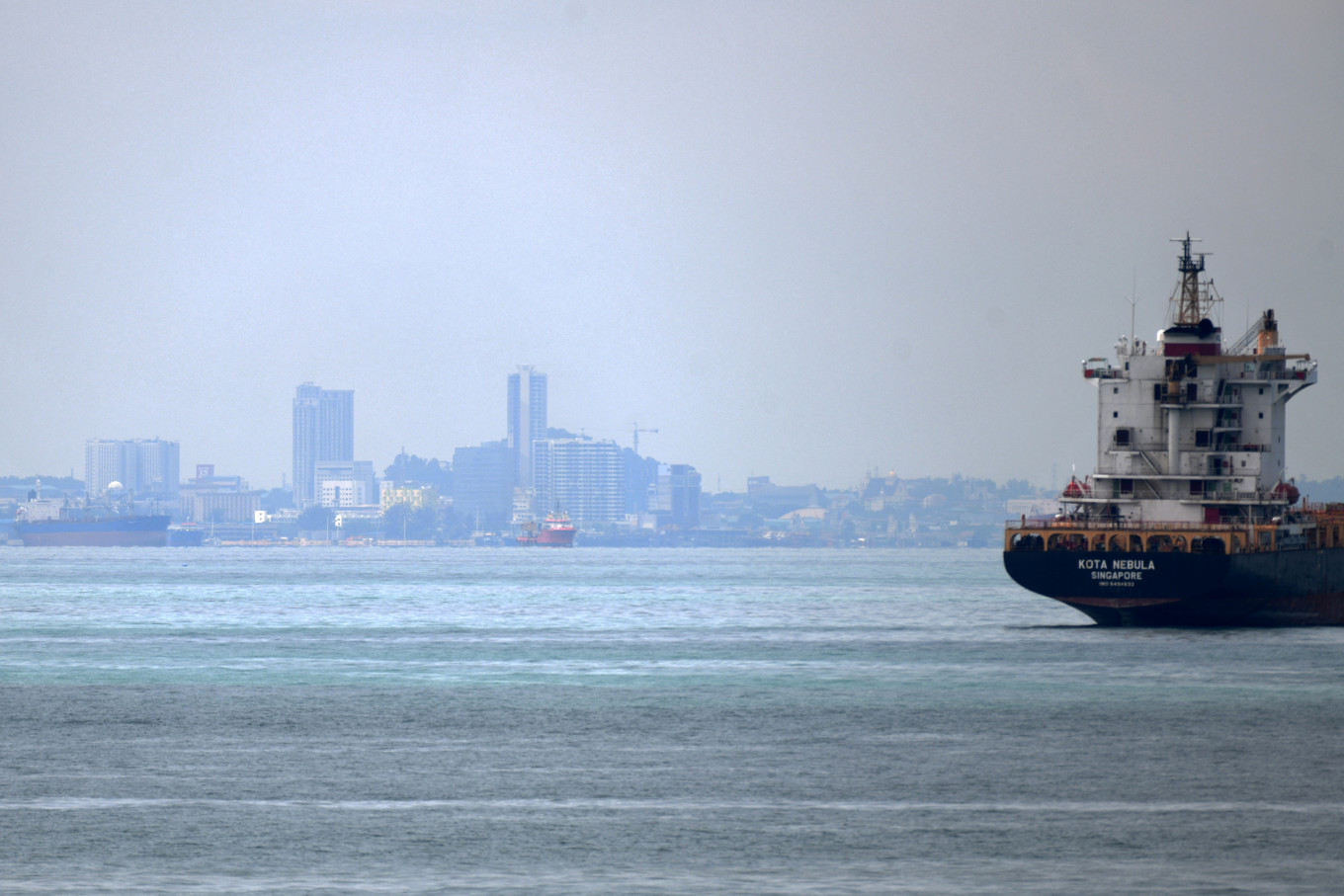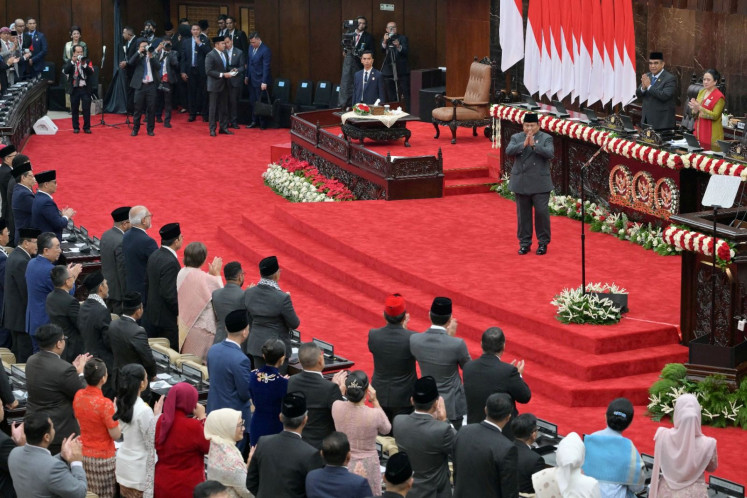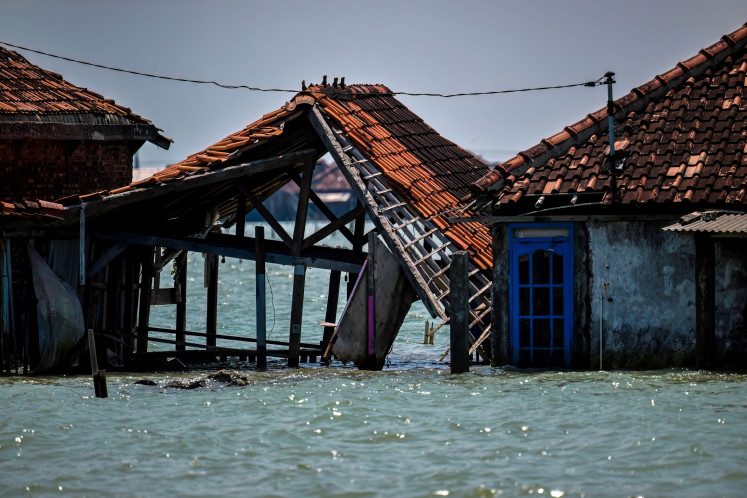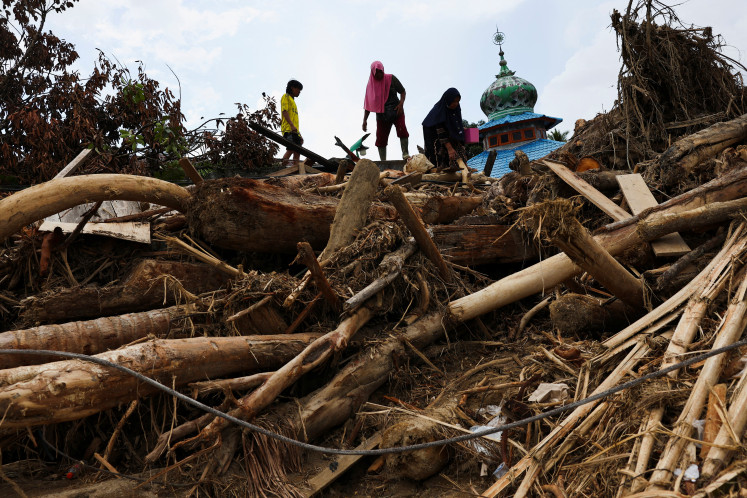Popular Reads
Top Results
Can't find what you're looking for?
View all search resultsPopular Reads
Top Results
Can't find what you're looking for?
View all search resultsMalaysia’s ‘ASEAN Shenzhen’ needs significant legal reform to take off
The development success of the Johor-Singapore-SEZ relies not only on infrastructure and diplomacy but also on an efficient legal and regulatory framework.
Change text size
Gift Premium Articles
to Anyone
T
he Johor–Singapore Special Economic Zone (JS-SEZ) has been hailed as a game changer for ASEAN. Launched in January, this cross-border initiative brings together Malaysia’s land and workforce with Singapore’s capital and connectivity – aiming to be the future hub of trade, talent and technology.
The JS-SEZ has the potential to become ASEAN’s Shenzhen. Shenzhen is a city in Guangdong province often referred to as China’s Silicon Valley.
But beneath the promise lies a critical challenge: the legal and governance system.
Without a robust, inclusive and enforceable legal system, the JS-SEZ risks repeating the fate of past mega-projects like Forest City, a multibillion-dollar Malaysia-China property development that promised economic growth but ended up largely underoccupied and criticized for poor planning.
The success of the JS-SEZ will not just depend on cutting-edge infrastructure or diplomatic finesse. More importantly, it will rely on a clear and effective legal system.
Whether this ambitious plan becomes reality – or just another missed opportunity – will hinge on vigorous enforcement and solid cooperation between Malaysia’s federal and state governments.
The JS-SEZ spans both Singapore and Malaysia – two countries with different legal, administrative and land use planning systems. While the ambitious vision includes cross-border mobility, integrated logistics and harmonized tax rules, Malaysia’s complex regulatory environment remains a major obstacle.
Singapore operates under a unitary system, while Malaysia’s is federal, giving individual states significant planning authority. Unlike Singapore’s streamlined system, Malaysia still faces fragmented land use planning and construction oversight.
Although Malaysia has Development Plans to guide its infrastructure and zoning, these plans are often outdated, incomplete, poorly enforced or ignored.
To aggravate the issues, legal overlaps and constitutional jurisdiction between federal and state authorities create confusion. The Town and Country Planning Act 1976 (Act 172), the National Land Code (Revised – 2020) (Act 828), the Street, Drainage and Building Act 1974 (Act 133) and the Uniform Building By-Laws 1984 contain provisions that not only contradict one another but also grant unwarranted immunity to authorities, thereby creating bureaucratic bottlenecks and fostering unaccountable administration.
Forest City – once a beacon, a high-profile megaproject within the JS-SEZ vicinity – offers a cautionary tale. Initially promoted as a smart eco-city for 700,000 residents in Johor, it now houses fewer than 10,000. Many buildings are abandoned, infrastructure is underused and land reclamation has damaged local marine life.
The project’s developer, now facing funding issues, failed to deliver the projected goals. Meanwhile, local communities feel marginalized by the unaffordable housing provided by the project.
Forest City demonstrates how ambitious planning can fall short without robust legal safeguards, effective housing reforms, solid environmental protection and inclusive planning to achieve social justice.
Delays in getting land and planning approvals, as well as inconsistent law interpretations – such as in cases like Syarikat Bekerjasama-sama Serbaguna Sungai Gelugor, Perbadanan Pengurusan Trellises and Visamaya Sdn Bhd – may also keep investors away from Malaysia.
Indonesia’s SEZ experience adds more lessons. The Batam-Bintan-Karimun zone, for instance, suffered from unclear land tenure, overlapping jurisdictions and poor central-local coordination. Investors faced regulatory uncertainty.
In contrast, Kendal Industrial Park in Central Java, codeveloped with Singapore, has succeeded thanks to a centralized legal regime and streamlined approvals.
To avoid repeating past mistakes, five urgent JS-SEZ reforms are needed.
First is enacting a dedicated JS-SEZ land development act. This law must integrate and coordinate planning, land, transportation, environmental, taxation, building and investment regulations across the federal and state governments. With six local authorities and 11 priority sectors involved, overlapping jurisdictions could lead to duplication, delays and confusion.
Second is creating a statutory master plan. Johor and Singapore should initiate a special development and master plan that governs land use planning covering infrastructure, housing, logistics, sustainability and public services. Without legal weight, such plans risk being shelved. The blueprint must be strategic, implementable and regularly reviewed to maintain its effectiveness and relevance over time.
Third, empowering technical agencies. Public works, environment, geoscience and minerals and irrigation departments, as well as other relevant technical agencies, should move beyond advisory roles to decision-making authority in land use planning. Their approvals should be premised on sound technical, safety and environmental grounds.
These technical agencies should also be legally responsible for providing accurate, up-to-date big data and analytics for every district in Malaysia, including challenges and measures. Outdated guidelines must be replaced with real-time insights, and artificial intelligence should be adopted to enhance decision-making and service delivery.
Fourth is community inclusion. Planning must be people-centered. Zoning should strike a balance between investor interests, housing and property affordability, green spaces, public amenities, interest and welfare. Community consultation should go beyond symbolism and become a legal requirement, with feedback influencing decisions.
Another pressing issue is rampant land speculation with property prices adjacent to the Regional Transit System (RTS) transit stations spiking to more than 2,000 ringgit per square foot (approximately US$470).
Such rapid increases price out residents from the housing market. Legal means like land price controls, mandatory quotas for affordable housing and the application of reversionary rights could be used to ensure inclusivity and equitable urban development.
And fifth is energy transparency. The JS-SEZ’s long-term success also depends on clean, stable energy. Data centers, for example, require reliable high-capacity power.
Energy infrastructure will also determine the viability of JS-SEZ. Industries, especially data centers, need stable, clean power.
While solar and hydrogen are promising, they may not meet short-term industrial needs. A shared nuclear energy project between Malaysia and Singapore could offer a sustainable solution by modelling after the Krško plant in Slovenia and Croatia.
However, such a project must be grounded in robust laws, meaningful public participation and rigorous safety and security standards.
We must not build another Forest City. We must create a future that works for all – legally, sustainably and inclusively.
---
The writer is a law lecturer at University Utara Malaysia. The article is republished under a Creative Commons license. The views expressed are personal.











